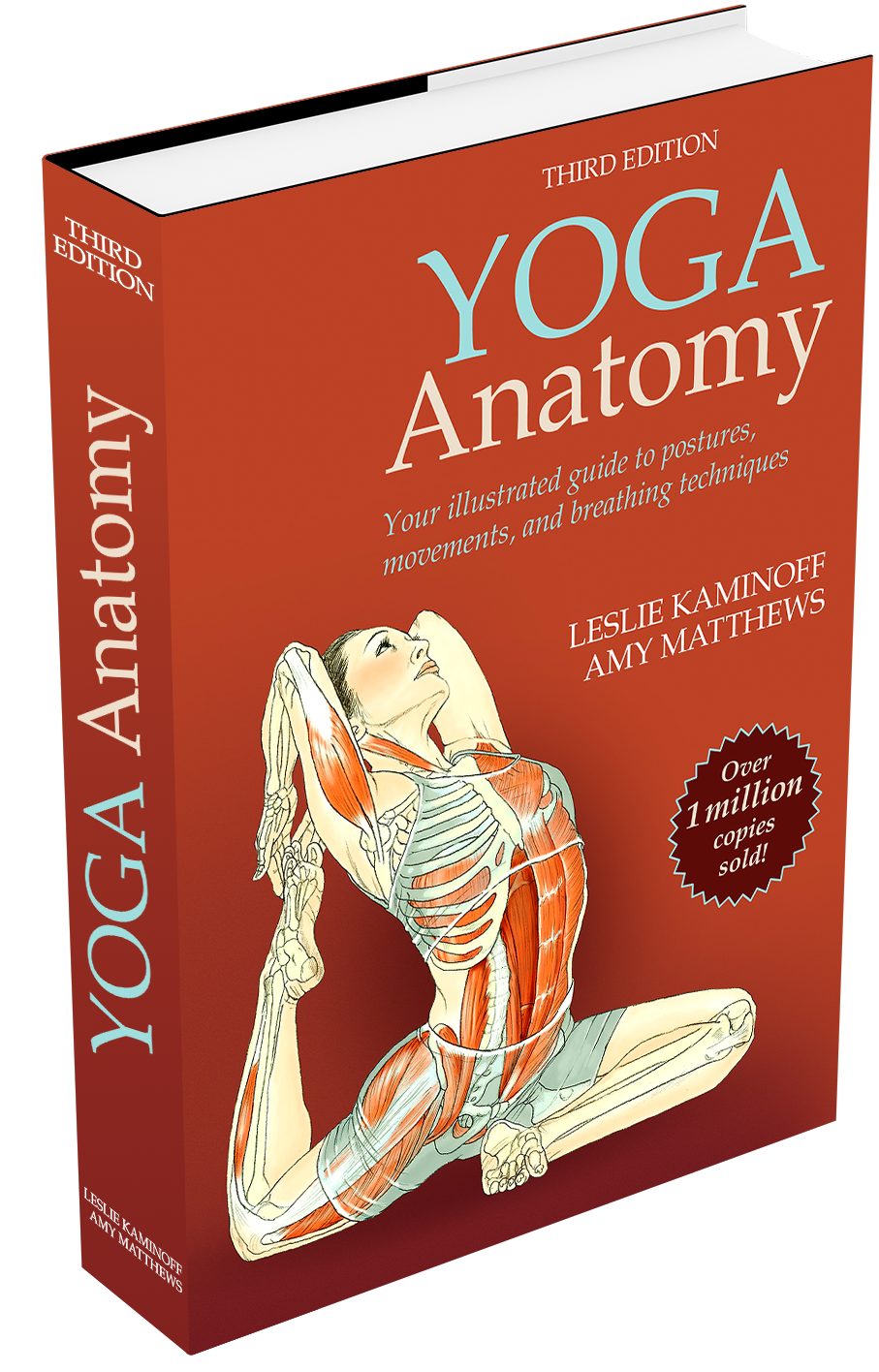Adho Mukha Svanasana

Downward Facing Dog Pose
adhomukha = having the face downwards
shvana = dog
Notes
There are many approaches to working with this pose. Fundamentally, it is a great opportunity to observe the effects of the arms and legs on the spine.
Assuming the spine is in neutral extension or axial extension, then there is flexion in both the shoulder joints and the hip joints and extension in the elbows and knees.
The latissimus dorsi often try to help in the action of the arms, but these muscles depress and internally rotate the shoulders (the opposite of the desired action), which can create an impingement at the acromion process.
The pronators are active in the forearms, but if rotation between the radius and ulna is limited, this restriction can translate into overarticulation in the elbows or wrists, or internal rotation of the arms at the shoulder joints—all common sites of injury for practitioners of vinyasa styles of yoga that employ repetitive downward-facing dogs in sun salutations.
As in the foot and leg, the intrinsic action in the hand is essential for the integration of the whole arm. Essentially, each hand must act as much as a foot as possible by maintaining its arch.
Images from the book Yoga Anatomy by Leslie Kaminoff & Amy Matthews displayed on this website are used under license.

Love Learning with Leslie?
Study with him personally online, from anywhere in the world.
Which course is right for me?
